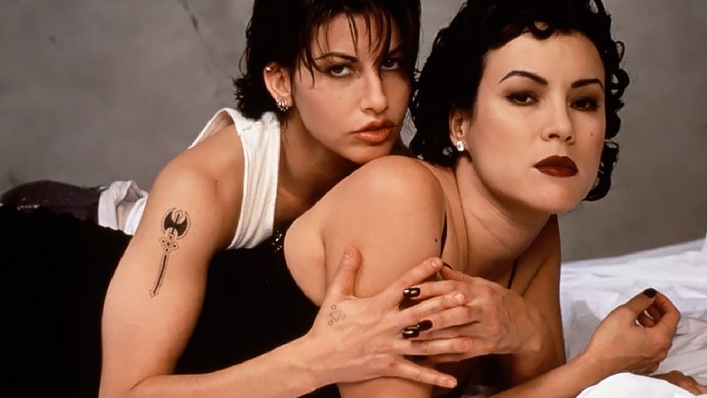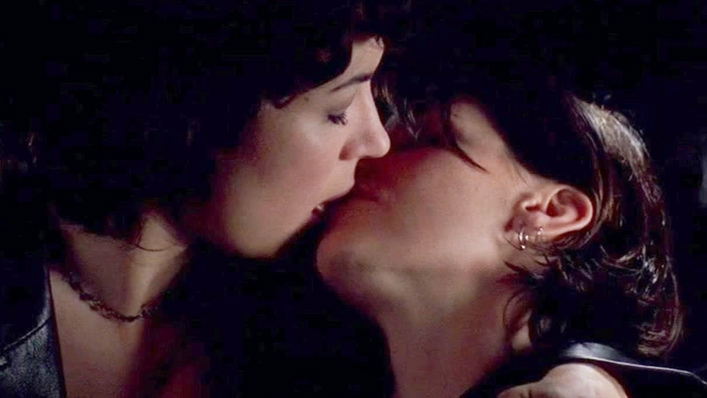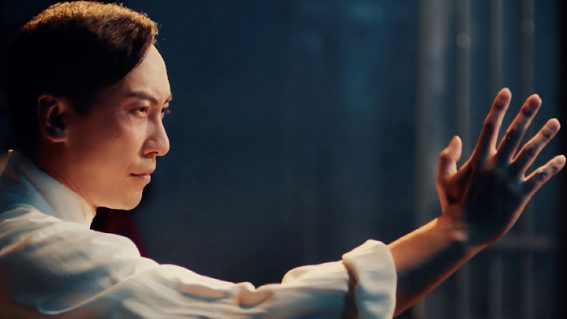25 years on, the Wachowskis’ Bound is a superb sexually-charged thriller
This classic low budget noir is torrid, steamy and unflinchingly erotic, but never sleazy.

Before they reinvented action cinema with The Matrix, the Wachowski sisters wrote and directed the steamy low-budget noir Bound. Critic Travis Johnson revisits the film on its 25th birthday.
Speaking plainly, Lily and Lana Wachowski’s best film is still The Matrix, the 1999 cyberpunk insta-classic that rewrote the action movie rulebook, cemented Keanu Reeves as a bona fide movie star, briefly invoked a fad for reality-bending sci-fi, and birthed some rather unloved sequels that are nonetheless still worth a look. Their subsequent output has never matched the zeitgeist-capturing energy of The Matrix, although each work—Speed Racer, Cloud Atlas, Jupiter Ascending, Sense8, and various non-directorial projects—holds something of interest; some spark of inspiration or audacity.
See also:
* Movies now playing in cinemas
* All new streaming movies & series
Still, for the Wachowskis’ second-best film we have to look back to 1996, when the sisters, then a screenwriting team with little other than the Stallone/Banderas vehicle Assassins under their collective belt, made their directing debut with the steamy, low-budget noir pastiche, Bound.
A noir crime caper with a difference
First, some context: in the mid-90s every emerging indie director was making hip, glib crime movies—and if it wasn’t all Quentin Tarantino’s fault, it was certainly mostly so. After the one-two punch of Reservoir Dogs (1992) and Pulp Fiction (1994), a movie about fast-talking, post-modern gangsters doing a bunch of gangster shit looked like money in the bank. This period gave us some absolute gems, like Bryan Singer’s The Usual Suspects, Gary Fleder’s Things to Do in Denver when You’re Dead, or Christopher McQuarrie’s Way of the Gun, but the vast swathe were forgettable at best. Onto this stage came the Wachowskis, who had a rather classical noir crime caper they wanted to tell—but one with a difference.

The basic plot of Bound is familiar to anyone with a penchant for hard boiled fiction or noir cinema: a tough, recently paroled thief falls for a gangster’s moll and plots with her to relieve her loutish husband of his fortune and possibly his life. Their passion is palpable but will our hero—and perhaps you’re picturing Humphrey Bogart or, even better, Robert Mitchum—find his duplicitous lover has double-crossed him too?
Steamy but never sleazy
The crucial difference here is that both our tough guy and our femme fatale are women. Gina Gershon (Showgirls) plays Corky, the ex-con pulling down an honest wage renovating the condo next door to that owned by Mafia functionary Caesar (Joe Pantoliano, who would reteam with the directors for The Matrix). Jennifer Tilly (the Child’s Play franchise) is Caesar’s arm candy, but you know as soon as she and Corky lock eyes that she’s considering trading the boorish Caesar in for this butch new model.
Call it lesbian noir if you like, and a lot of pundits did back in 1996. However, while Bound is a heavingly sexy flick, it’s not interested in being prurient or catering to the male gaze: it’s torrid, steamy and unflinchingly erotic, but never sleazy. Its sex scenes are not gratuitous, but rather rooted (heh) in character. By the time Corky and Violet finally do the deed, we’ve been building up their tryst with such steadily mounting intensity that it’s a genuinely cathartic moment.
It’s all in the casting
And while the Wachowskis certainly shoot the heck out of Corky and Violet’s growing obsession with one another, along with Caesar’s increasingly bloody mission to figure who has swiped a sweet two million from his mob bosses, what really makes Bound sing is its cast. Gershon has never been better than she is here, with her shaggy bob and tank tops, channeling the inarticulate, sensitive masculinity of silver screen tough guys like Marlon Brando and Montgomery Clift but never abandoning her character’s feminine nature in doing so.
Tilly, often relegated to hapless dame roles thanks to her squeaky voice and feminine curves, here turns those attributes into weapons. She uses them to disarm the men around her—and to seduce Corky—while letting the audience catch glimpses of the sharp and calculating mind whirring behind her long-lashed eyes. As for the great Joey Pants? Well, who better to embody Caesar, whose sharp suits and pretensions to civility and sophistication cannot mask his brutish nature? This was Pantoliano’s first leading role—and he digs in with gusto.
Bound is still ground zero for the Wachowskis
Looking at Bound now, it’s hard to see much indication of the visual verve that Lana and Lily would bring to their later works. The high-flying, anime-inflected flights of fancy that would characterize The Matrix movies, Speed Racer, and the rest are not present here. The directorial siblings read from the same post-Coen Brothers aesthetic playbook that pretty much everyone was reading from then, from Stephen Soderbergh to Robert Rodriguez: visual flair often only loosely anchored to story motivation.
Off the back of Bound, no-one in their right mind would have guessed that the sisters were one move away from sweeping the legs out from under the action genre in one fell swoop. Yet Bound is still ground zero for the Wachowskis’ chief thematic concerns, which all hinge on questions of identity.
Their entire filmography revolves around characters finding out or revealing that they are more than what they seem, greater than the face they show the world. Thomas Anderson is Neo, freedom-fighting hacker and saviour of humanity. Housecleaner Jupiter Jones discovers she’s actually Queen of the Universe. Everyone in Cloud Atlas is someone—perhaps everyone?—else, thanks to the film’s system of reincarnation.

‘I know what I am’
And as for Bound? While Corky is out as a lesbian, frequenting gay bars to pick up and rocking a defiantly butch personal style, Violet is closeted, sleeping with men for what, in the text of the film, is her own advantage. Still, as she tells Corky when first beginning the dance of seduction, “I know what I am.”
But does she? In classic noir fashion, Bound is about trying to parse various characters’ real motivations and identities. With Tilly’s Violet in the classic femme fatale position, she remains for much of the running time a possible threat to Corky, a straight shooter who might very well fall victim to a sexy dame playing an angle. It’s not until the final movements of the film that we get to find out.
And let us not forget that Bound was directed by two transgender women who were not out at the time of its making, and our understanding of the film changes with that current knowledge. Much digital ink has been spilled recently about how The Matrix can be perceived as a trans allegory, with characters who are ordinary in the “real” world becoming their true selves in the film’s titular artificial reality.
Bound, a smaller but more tightly conceived film, manages to do the same thing without all the sci-fi trappings, cleverly illustrating how the face we show the world may not reflect our inner reality, and how liberating it is when we find someone with whom we can be true to ourselves. This makes Bound more than a simple but sexy genre exercise, but a smart and vital classic of modern queer cinema.




















